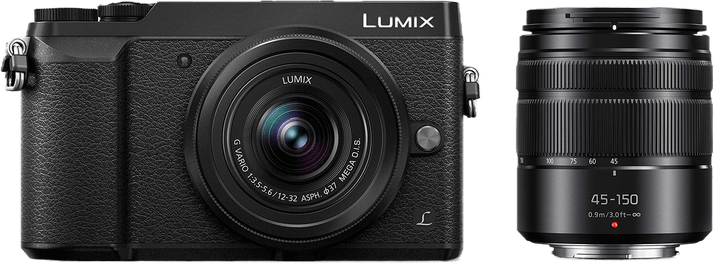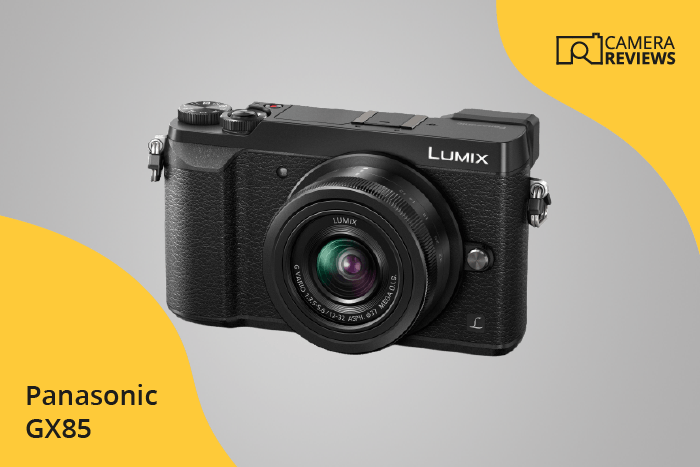Panasonic Lumix GX85 (GX80) Specs and Scores

The Panasonic Lumix GX85 (GX80) receives a score of 53/100 due to its general specifications. Announced on April 5, 2016, this mirrorless camera launched at a price of $800. Measuring 122 x 71 x 44mm and weighing 426g, the GX85 offers a compact and lightweight design. Although its specifications are not groundbreaking in today’s market, the camera remains a decent option for those seeking a user-friendly and portable option.
Panasonic Lumix GX85 (GX80) Overview and Optics
The optics of the Panasonic Lumix GX85 (GX80) receives a score of 55/100. This camera features 16 megapixels, a shooting speed of 8, and a CMOS sensor. The Venus Engine processor powers the camera, and it has a DXOMARK sensor score of 72. With a Micro Four Thirds sensor size and a Micro 4/3 lens mount, the GX85 provides versatility in lens options. Additionally, the camera has image stabilization and a 4:3 aspect ratio.
In the current market, the GX85’s optics specifications fall in the middle range. The 16-megapixel resolution is adequate for most photography needs, but higher resolutions are available in other cameras. The shooting speed of 8 is suitable for capturing fast-moving subjects, but it is not the fastest option available. The Venus Engine processor and the DXOMARK score of 72 provide decent performance, but other cameras have higher scores and better processors.
The Panasonic Lumix GX85 (GX80) offers a reasonable balance between quality and affordability in its optics specifications. While it may not be the top choice for professionals seeking the highest possible performance, the GX85 is a solid option for photographers looking for a versatile and reliable camera.
Panasonic Lumix GX85 (GX80) Video Performance
The Panasonic Lumix GX85 (GX80) boasts a video score of 83/100, reflecting its strong performance in this category. This camera captures 4K video resolution with maximum dimensions of 3840 x 2160, ensuring high-quality footage. Additionally, it supports a maximum video frame rate of 60fps, providing smooth motion and excellent detail during recording.
A notable feature of the Lumix GX85 (GX80) is its built-in time-lapse functionality, which allows users to create stunning time-lapse sequences without the need for external accessories or software. This capability further enhances the camera’s versatility and creative potential.
When assessing the Lumix GX85’s (GX80) video capabilities against other cameras in today’s market, it stands as a strong contender. The combination of 4K resolution, 60fps frame rate, and time-lapse functionality make it a reliable choice for both amateur and professional videographers.
Panasonic Lumix GX85 (GX80) Features and Benefits
The Panasonic Lumix GX85 (GX80) features a score of 57/100, which is a moderate rating for this camera. Its 3-inch screen with a resolution of 1040000 dots provides clear visuals for users. The camera also has a touchscreen and a flip screen, making it easy to navigate through settings and capture images from various angles.
In today’s competitive market, the Lumix GX85 (GX80) holds its ground with the inclusion of WIFI capabilities, allowing users to transfer photos and videos quickly. However, the camera does not have GPS or Bluetooth features, which may be a drawback for some users looking for additional connectivity options.
The Lumix GX85 (GX80) offers a decent set of features for its price range, but it may not be the top choice for those seeking more advanced connectivity options. The camera’s touchscreen and flip screen are great additions, while the lack of GPS and Bluetooth may be a limitation for some users.
Panasonic Lumix GX85 (GX80) Storage and Battery
The storage and battery score for the Panasonic Lumix GX85 is 29/100. The camera has a single memory card slot that supports SD, SDHC, and SDXC cards. With a battery life of 290 shots, the Lumix GX85 uses a DMW-BLG10 battery, and supports USB charging.
In the current market, the storage and battery capabilities of the Lumix GX85 may not meet the expectations of some users, especially those who require longer battery life or multiple memory card slots.
The Panasonic Lumix GX85’s storage and battery performance may not be suitable for all users, particularly those who need extended shooting capabilities and flexible charging options.
Panasonic Lumix GX85 (GX80) Alternatives
Do you want to know how the Panasonic Lumix GX85 (GX80) compares to its competitors? Have a look at the most popular comparisons for this camera below:
- Panasonic Lumix DMC-G80 vs Lumix DMC-GX80
- Panasonic Lumix DMC-GX8 vs Lumix DMC-GX80
- Panasonic Lumix DMC-LX100 vs Lumix DMC-GX80
- Canon EOS M50 Mark II vs Panasonic Lumix DMC-GX80
- Olympus OM-D E-M10 Mark III vs Panasonic Lumix DMC-GX80
- Panasonic Lumix DMC-GX80 vs Sony a6400
Panasonic Lumix GX85 (GX80) FAQ
Does the Panasonic Lumix GX85 (GX80) Have Built-in Image Stabilization?
Yes, the Panasonic Lumix GX85 (GX80) features a 5-axis Dual Image Stabilization system, which effectively reduces camera shake and ensures sharp images and smooth video recording.
Does the Panasonic Lumix GX85 (GX80) Support 4K Video Recording?
Yes, the Panasonic Lumix GX85 (GX80) supports 4K video recording at 30fps, allowing users to capture high-resolution, cinematic-quality videos with ease.
What Size Sensor Does The Panasonic Lumix GX85 (GX80) Have?
The Panasonic Lumix GX85 (GX80) is equipped with a Micro Four Thirds sensor, which provides excellent image quality and low-light performance in a compact form factor.
Does the Panasonic Lumix GX85 (GX80) Have a Dual Memory Card Slot?
No, the Panasonic Lumix GX85 (GX80) has a single SD card slot, which supports SD, SDHC, and SDXC memory cards for storage of photos and videos.
Does the Panasonic Lumix GX85 (GX80) Have a Touch Screen?
Yes, the Panasonic Lumix GX85 (GX80) features a 3-inch, 1.04-million-dot touch screen LCD, which allows for easy navigation and control of camera settings.
Does the Panasonic Lumix GX85 (GX80) Have Wi-Fi and Bluetooth?
While the Panasonic Lumix GX85 (GX80) does have built-in Wi-Fi for wireless image transfer and remote control, it does not feature Bluetooth connectivity.
Does the Panasonic Lumix GX85 (GX80) Have GPS?
No, the Panasonic Lumix GX85 (GX80) does not have built-in GPS for geotagging images. However, you can use the camera’s Wi-Fi to connect with a smartphone for geotagging purposes.
Is the Panasonic Lumix GX85 (GX80) Weather Sealed?
No, the Panasonic Lumix GX85 (GX80) is not weather sealed. To ensure the longevity of the camera, it is recommended to avoid exposing it to harsh weather conditions.
Does the Panasonic Lumix GX85 (GX80) Have a Built-in Flash?
Yes, the Panasonic Lumix GX85 (GX80) has a built-in pop-up flash, which is useful for fill-flash and low-light situations when an external flash is not available.

